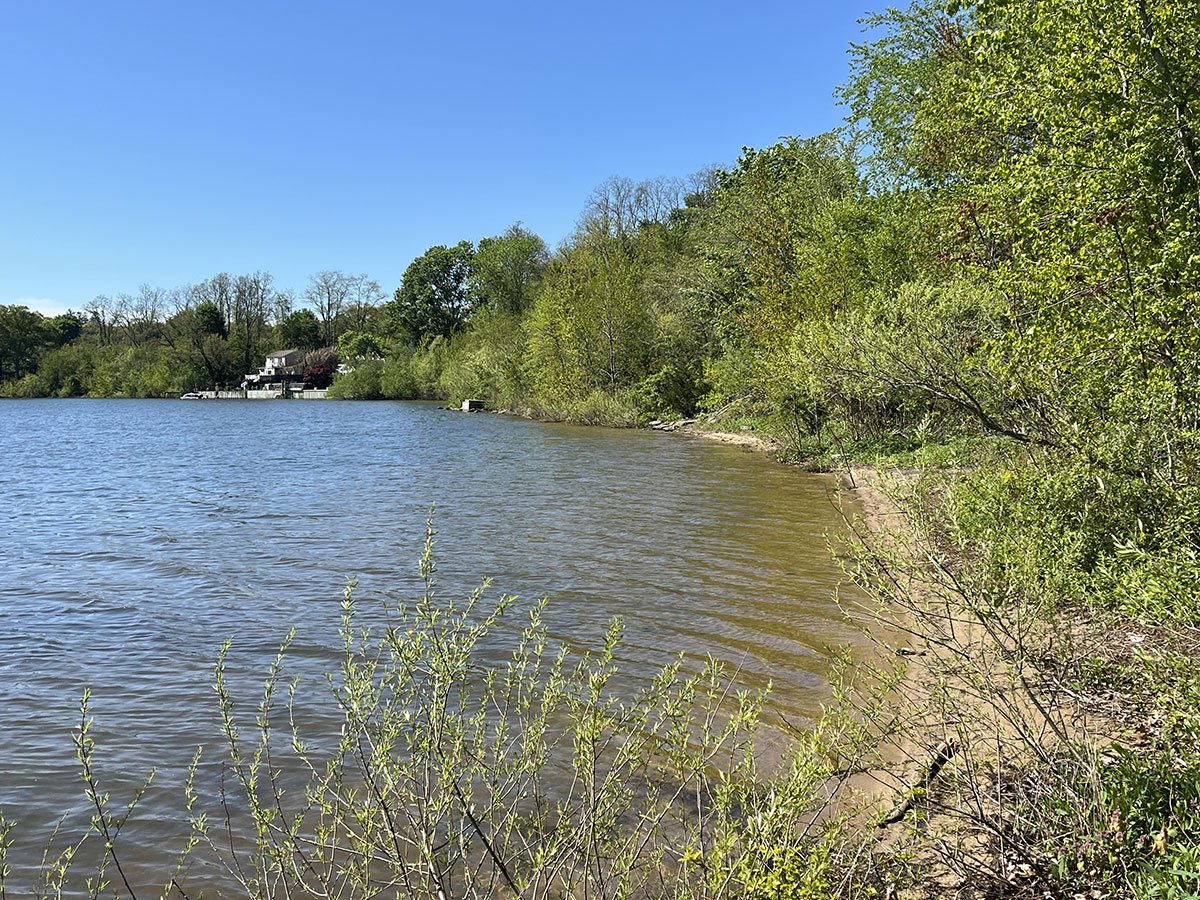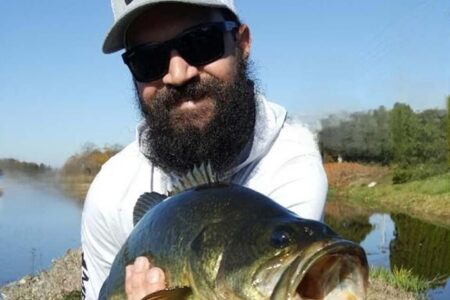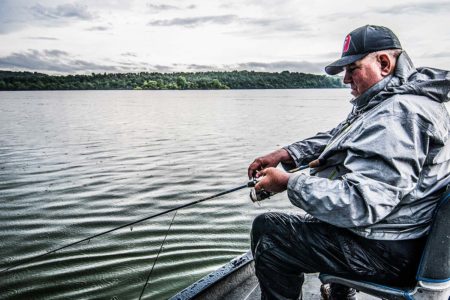
When the sun goes down in the summer, you’ll find some of the best largie fishing.
It was dark night, coming off a new moon as my buddy Rick Holmberg and I trekked along the shoreline of a secluded pond in Eastport. It was the evening, around 11 p.m., after another summer day reaching close to 90 degrees. The bass action by day had come to a complete standstill, but we knew they would be active after dark when the water cooled slightly without the baking of the sun. Rick was throwing a 6-inch Slug-Go weedless style, fishing it like a jerkbait, but super slow. I was throwing my usual black Jitterbug. The night was quiet without an inkling of noise when my plop-plop-plop-plop retrieve suddenly stopped and a bass broke the water’s surface. As I was fighting this fish, Rick nailed one on the Slug-Go. On another outing in upstate NY, fishing with “Crazy” Alberto Knie, Capt. Rich Tenreiro and Rick, all of us throwing Jitterbugs, the night was again quiet except for the plop-plop-plop of our bugs. Then mayhem set loose and we caught fish-after-fish, cast-after-cast for at least an hour! Oh how I love bass fishing after dark in the summer.
Summer Is Approaching

As summer approaches it is no secret that night bass fishing is the way to go. The daytime air/water temperatures are making bass lethargic by day, although they still need to fill their gut on a daily basis. The night bite allows them to search out and satisfy that need. There are certain aspects of night fishing Long Island that will make it all worthwhile. First off, the chance of landing a 5-plus pound fish, in my opinion, are a lot greater after dark. Second, the peace and solitude of night angling is nice too.
The key aspects for me when I fish after dark is picking apart the body of water ahead of time if possible. This means taking a ride by day and scoping out possible tree lines, lily pads and any form of structure where bass will lie. Focus on areas that you know will hold baitfish. Are there any lights close enough to the lake? In Montauk, Fort Pond has street lights that will cast a small amount of light. These are prime areas where bait will congregate. Is there any form of structure close to these areas? If so, from a distance, make a cast that brings your lure through the lighted area and into the darkness of the shelter. Chances are the bass is either facing the baitfish, ready to strike, or cruising toward it from its hiding spot. Either way, your lure will be heading towards the bass.
Another factor that I have found to be a definitive for years is the bass will most likely be close to shore. This does not mean if you head out on your boat you cannot fish deeper water, but I feel your best bet will be staying within casting distance of the shoreline. For shorebound anglers, parallel casts along the bank will serve you well. When walking the shore I try and set myself up to make a cast parallel, and about 15 feet off the bank. With this cast, you will cover the waters where a bass may be lying, ready to strike on your retrieve, and the ones in tight chasing baitfish.
Go-To Lures
It is no secret that I love throwing black Jitterbugs for night bass action. A black Zara Spook Jr is another great option, as is any of the 6-inch Slug-Go soft plastics in black or darker hue. I have no idea why black or darker colors work so well after dark, but from what I have read, black offers the best contrast as a bass looks towards the surface and there is moon light. However, I have had great action on the darkest of nights, with no moon in sight, so go figure!
I also read recently that several southern anglers where huge bass are the norm have been using the Muskie Black Jitterbug, hoping to seduce a toad of 10 plus pounds. We may not have many 10-pounders on Long Island, although I am sure there are some. When using this lure you will have to have a lot of patience and not just look for action. The only bite you may get all night though, could be that elusive 10-pounder.

Rod, Reel And Line
For the rod, reel and line, any good quality baitcaster like the Daiwa Tatula or Shimano Curado will work well on the “bugs” or spooks. I use nothing but 20 to 30-pound test braid, with the lure tied directly to the lure. On the Slug-Go side, I will also use the baitcaster, but the line will be 15 to 20-pound test braid, again tied directly to the lure. For me, nothing beats the Abu Garcia Veritas rod, which is 7-foot, 6-inches long, and rated for 10 to 20-pound test.
Be On The Move
When night bass fishing, do not stay still for a long period of time. Rick and I used to joke that when we plotted our night, which we did a day or two before, that there was a 7-Eleven in between every lake we planned on hitting. There will be nights while fishing a certain lake, you will not get a touch and cannot buy a fish, however, if you move 2 to 5 miles to another body of water, you may slam them for hours. We would usually fish a lake no more than 30 minutes. If it was a big lake like Ronkonkoma, we would pick a portion to fish, then move on. If the lake was a not within close range of others like Fort Pond, we would plan the night and revolve the fishing in segments around the lake.

Hit The Lakes
There are lakes all over Long Island that will produce largemouth bass in good numbers and sizes in the summer months. However, to list every lake I would need a lot more pages! The list below is a good starting point, and all of which I have caught bass after dark. Some have produced better than others, but all have a good supply of bass.

- Lake Ronkonkoma
- Fort Pond
- Great Patchogue Lake
- Westlake
- Upper Lake
- Massapequa Chain
- Kellis Pond
- Laurel Lake
Aside from these large and well-known lakes, there is a plethora of lakes throughout Long Island that are small however don’t offer ample parking and a lot of which may be restricted by resident rules, like one of the best, Wildwood Lake in Riverhead! I have found over the years if you are respectful, park legally, and are quiet, most people have no problem with you fishing.
Fishing for largemouths on Long Island after dark can reward you with the largest bass of the year, and maybe even the largest bass you have ever caught. I have said for years that I felt the next NY State Record largemouth bass could come from Long Island. I still feel that way today as we have many lakes that offer ample forage and a lot of catch and release bass anglers that are allowing these bass to continue to grow. Give it a shot, I am sure regardless of the size, it will be a fun night of action.




